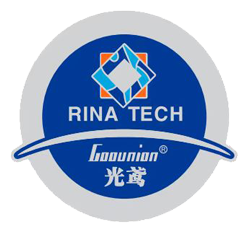The History of Light Guide Plate Technology: A Timeline
Light guide plate (LGP) technology has come a long way since its inception in the early 20th century. Originally developed for use in the aviation industry, LGPs have since become a crucial component in many modern technologies, including home appliances, lighting, and display devices.
1907-1912: The Invention of Total Internal Reflection
The concept of total internal reflection (TIR) was first introduced by John William Strutt, also known as Lord Rayleigh, in 1907. This discovery laid the foundation for the development of LGP technology.
1912-1920s: Early Development of LGP Technology
In the 1910s and 1920s, researchers began experimenting with TIR to create light guides. However, it wasn’t until the 1930s that LGPs were first used in practical applications.
1930s-1940s: LGPs in Aviation
During World War II, LGPs were used in aircraft instruments to provide backlighting for gauges and dials. This technology proved to be extremely useful and became a standard feature in many aircraft.
1950s-1960s: LGPs in Televisions
In the 1950s and 1960s, LGPs were used in television sets to provide backlighting for the screen. This technology allowed for brighter, clearer images and paved the way for the development of modern flat-screen TVs.
1970s-1980s: LGPs in Computers
In the 1970s and 1980s, LGPs were used in computer monitors to provide backlighting for the screen. This technology allowed for brighter, clearer images and paved the way for the development of modern LCD monitors.
1990s-Present: LGPs in Consumer Electronics
Today, LGPs are used in a wide range of consumer electronics, including home appliances, lighting, and display devices. They are also used in medical equipment, automotive displays, and more.
RINA TECH: A Leader in LGP Technology
One company at the forefront of LGP technology is RINA TECH, a Shenzhen-based manufacturer of light diffusion panels and reflector sheets. Founded in 2011, RINA TECH has quickly become a leader in the industry, with a focus on innovation and quality.
RINA TECH’s products are used in a variety of applications, including home appliance lighting and projection display instruments. The company’s light diffusion panels are designed to provide uniform illumination and reduce glare, while its reflector sheets are used to improve light efficiency.
Today
Today, light guide plate technology is used in a variety of applications, from consumer electronics to automotive lighting. One company that has been at the forefront of this technology is RINA TECH, a Shenzhen-based company that specializes in producing light diffusion panels and reflector sheets.
RINA TECH’s products are used in a variety of applications, including home appliance lighting and projector displays. One of the key advantages of RINA TECH’s products is their cost-effectiveness. By using advanced manufacturing techniques and high-quality materials, RINA TECH is able to produce high-quality products at a fraction of the cost of their competitors.
Looking to the Future
As light guide plate technology continues to evolve, we can expect to see even more advancements in the coming years. From improved efficiency to new applications, the possibilities for this technology are endless. And with companies like RINA TECH leading the way, we can be sure that these advancements will be both innovative and cost-effective.
In conclusion, the history of light guide plate technology is a testament to human ingenuity and innovation. From its early beginnings in aviation to its widespread use in consumer electronics today, light guide plates have come a long way. And with companies like RINA TECH pushing the boundaries of what is possible, we can be sure that this technology will continue to evolve and improve for years to come.
For more about Light Guide Plate apply cases video, welcome to visit: RINA TECH Youtube Channel, thank you.
